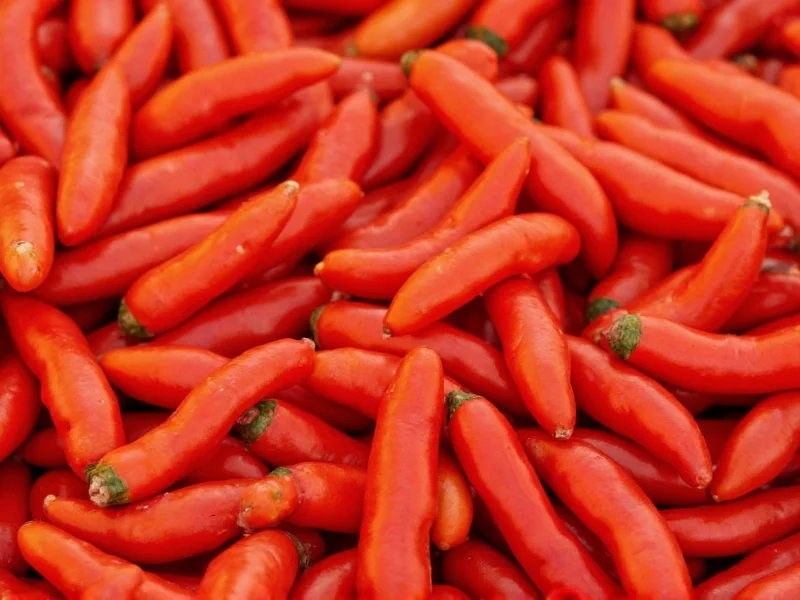Paprika has become a staple spice in kitchens worldwide, adding vibrant color and distinctive flavor to dishes from goulash to roasted vegetables. Understanding what paprika is made of helps home cooks and professional chefs select the right variety for their culinary creations and appreciate this versatile spice's rich history.
The Essential Components of Paprika
At its core, paprika consists of nothing more than dried and ground peppers. The Capsicum annuum species provides the foundation for most paprika varieties, though specific cultivars determine the final product's characteristics. Unlike many commercial spice blends, authentic paprika contains no fillers or additives—just pure ground peppers.
The color spectrum of paprika ranges from bright orange-red to deep brick red, depending on the carotenoid content of the peppers used. These natural pigments not only create paprika's signature hue but also contribute to its nutritional profile, offering antioxidants like beta-carotene.
Pepper Varieties That Make Paprika
Different regions cultivate specific pepper varieties to produce distinctive paprika types:
| Paprika Type | Primary Pepper Varieties | Flavor Profile |
|---|---|---|
| Hungarian | Kulonleges, Csipetke, Csemege | Sweet to hot, complex fruitiness |
| Spanish Pimentón | Ãgridulce, Bácari, Jaranda | Smoked or sweet, earthy notes |
| Serbian | Darko, Morava | Moderately hot, rich color |
| American | Ancho, Bell peppers | Mild, sweet, less complex |
Traditional Production Methods
The process of making paprika has remained largely unchanged for centuries, though modern techniques have increased efficiency. What is paprika made from begins with careful harvesting when peppers reach peak ripeness and color development.
In traditional Hungarian production, farmers hand-select peppers, then string them together and hang them in well-ventilated barns to air-dry naturally. This slow drying process preserves flavor compounds better than mechanical drying. After drying, workers remove stems and seeds before grinding the peppers using stone mills that generate minimal heat, preventing flavor degradation.
Spanish pimentón undergoes a distinctive smoking process where peppers dry over oak or holm oak fires for several days. This smoking technique creates pimentón de la Vera, with its characteristic smoky flavor that distinguishes it from other paprika varieties.
Commercial Production and Quality Considerations
When examining what paprika is made from in commercial products, consumers should check labels carefully. Pure paprika contains only ground peppers, but some lower-quality products may include:
- Anti-caking agents like silicon dioxide
- Fillers such as rice flour or wheat starch
- Artificial colorants to enhance redness
High-quality paprika maintains its vibrant color and aroma for 6-12 months when stored properly in an airtight container away from light and heat. The best products display a rich, complex aroma with notes of dried fruit and earthiness, depending on the variety.
Nutritional Profile and Culinary Applications
Beyond its role as a coloring agent, paprika contributes valuable nutrients to dishes. Two teaspoons of paprika provide approximately 30% of the daily recommended intake of vitamin A, plus smaller amounts of vitamin E, vitamin B6, and iron.
Chefs leverage different paprika varieties for specific culinary effects:
- Sweet paprika enhances color without adding heat to dishes like deviled eggs
- Hot paprika provides gentle warmth to stews and braises
- Smoked paprika adds depth to barbecue rubs and roasted vegetables
- Sweet Hungarian paprika creates the signature flavor in traditional chicken paprikash
How to Identify Authentic Paprika
When determining what paprika is made from in a particular product, examine these indicators of quality:
- Ingredient list showing only "paprika" or "ground peppers"
- Rich, deep red color rather than bright artificial-looking red
- Complex aroma with fruit, earth, or smoke notes depending on variety
- Region-specific labeling (Hungarian, Spanish, etc.) indicating traditional production
Authentic paprika should never contain mysterious additives or appear unnaturally uniform in color. The finest varieties often come in small quantities from specialty producers who maintain traditional methods of what paprika is made from and processed.
Is paprika just ground peppers with no additives?
Pure paprika contains only dried and ground peppers with no additives. However, some commercial products may include anti-caking agents like silicon dioxide or fillers such as rice flour. Always check the ingredient list to determine what paprika is made from in a specific product.
What gives paprika its red color?
Paprika's vibrant red color comes from natural carotenoids, particularly capsanthin and beta-carotene, which develop as the peppers ripen. The concentration of these pigments varies based on pepper variety, growing conditions, and drying methods.
How is smoked paprika different from regular paprika?
Smoked paprika (pimentón) is made by drying peppers over wood fires, typically oak, which infuses the peppers with smoke flavor before grinding. Regular paprika undergoes air-drying without smoke exposure. This smoking process creates the distinctive flavor profile of Spanish pimentón that differs significantly from Hungarian or American paprika varieties.
Can I make paprika at home?
Yes, you can make paprika at home by drying ripe bell peppers or chili peppers until brittle, then grinding them into a fine powder. For best results, use a food dehydrator at low temperature (135°F/57°C) for 12-24 hours, then process in a spice grinder. Home-made paprika won't have the same complexity as traditionally produced varieties but offers a fresh alternative.
Why does paprika sometimes lose its color?
Paprika's color fades when exposed to light, heat, or oxygen. The carotenoids responsible for its red hue are sensitive to these elements. To preserve color and flavor, store paprika in an airtight container in a cool, dark place, and use within 6-12 months for optimal quality. Proper storage maintains what paprika is made from in its most vibrant form.











 浙公网安备
33010002000092号
浙公网安备
33010002000092号 浙B2-20120091-4
浙B2-20120091-4